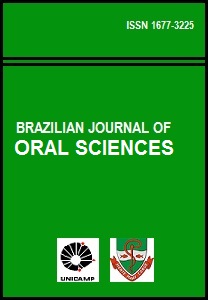Abstract
Aims: Thanks to advances in osseointegration, oral rehabilitation specialists have had the option of using implants to improve retention and stability in treatments with complete dentures. This study compared the masticatory muscle electromyographic activity in implant-supported overdenture wearers, complete denture wearers and dentate individuals. The electromyographic activity of the right and left masseter muscles, and the right and left anterior temporalis muscles was analyzed in 10 implant-supported overdenture wearers (Group 1), 10 conventional complete denture wearers (Group 2), and 10 dentate individuals (Group 3), with mean age of 65 years, at rest and during postural position maintenance. The analysis was performed using the MyoSystem-Br1 electromyographer with differential active electrodes. Analysis of variance tests were carried out to compare the groups and muscles and revealed different electromyographic values that were statistically significant at 1% significance level. Duncan’s pos-hoc test showed that Group 3 presented the smallest values (pd”0.01). The electromyographic contraction pattern was similar between Groups 1 and 3 (p>0.01), and hyperactivity of anterior temporalis muscles was observed in Group 2 (pd”0.01). Conclusions: dentate individuals had smaller electromyographic values of masticatory muscles and the overdenture use caused electromyographic contraction patterns similar to those of dentate individuals in both positions.The Brazilian Journal of Oral Sciences uses the Creative Commons license (CC), thus preserving the integrity of the articles in an open access environment.
Downloads
Download data is not yet available.

